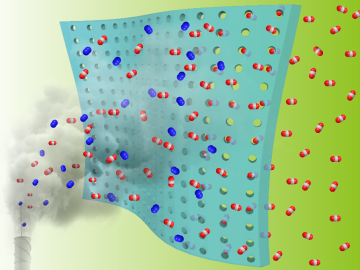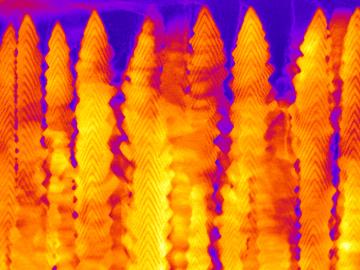
Filter News
Area of Research
- (-) Materials (87)
- Advanced Manufacturing (8)
- Biology and Environment (24)
- Building Technologies (1)
- Computational Engineering (3)
- Computer Science (14)
- Electricity and Smart Grid (1)
- Energy Frontier Research Centers (1)
- Energy Science (103)
- Fusion and Fission (13)
- Fusion Energy (9)
- Isotope Development and Production (1)
- Isotopes (1)
- Materials Characterization (1)
- Materials for Computing (16)
- Materials Under Extremes (1)
- Mathematics (1)
- National Security (18)
- Neutron Science (28)
- Nuclear Science and Technology (4)
- Quantum information Science (4)
- Sensors and Controls (1)
- Supercomputing (66)
- Transportation Systems (2)
News Type
News Topics
- (-) Artificial Intelligence (4)
- (-) Composites (7)
- (-) Computer Science (9)
- (-) Fusion (4)
- (-) Grid (2)
- (-) Machine Learning (2)
- (-) Materials Science (54)
- (-) Nanotechnology (29)
- (-) Quantum Science (11)
- (-) Transportation (10)
- 3-D Printing/Advanced Manufacturing (19)
- Advanced Reactors (2)
- Bioenergy (9)
- Biology (4)
- Biomedical (5)
- Buildings (3)
- Chemical Sciences (24)
- Clean Water (1)
- Coronavirus (3)
- Critical Materials (13)
- Cybersecurity (3)
- Energy Storage (26)
- Environment (8)
- Exascale Computing (1)
- Frontier (2)
- High-Performance Computing (2)
- Isotopes (7)
- ITER (1)
- Materials (50)
- Microscopy (18)
- Molten Salt (3)
- National Security (3)
- Neutron Science (22)
- Nuclear Energy (5)
- Partnerships (8)
- Physics (16)
- Polymers (12)
- Quantum Computing (2)
- Security (1)
- Space Exploration (1)
- Summit (1)
Media Contacts

Researchers at the Department of Energy’s Oak Ridge National Laboratory and the University of Tennessee, Knoxville, are advancing gas membrane materials to expand practical technology options for reducing industrial carbon emissions.

An ORNL team used a simple process to implant atoms precisely into the top layers of ultra-thin crystals, yielding two-sided structures with different chemical compositions.

A team led by the Department of Energy’s Oak Ridge National Laboratory synthesized a tiny structure with high surface area and discovered how its unique architecture drives ions across interfaces to transport energy or information.

Oak Ridge National Laboratory researchers have developed a thin film, highly conductive solid-state electrolyte made of a polymer and ceramic-based composite for lithium metal batteries.

Scientists at Oak Ridge National Laboratory used a focused beam of electrons to stitch platinum-silicon molecules into graphene, marking the first deliberate insertion of artificial molecules into a graphene host matrix.

OAK RIDGE, Tenn., Feb. 27, 2020 — Researchers at Oak Ridge National Laboratory and the University of Tennessee achieved a rare look at the inner workings of polymer self-assembly at an oil-water interface to advance materials for neuromorphic computing and bio-inspired technologies.

An international team of researchers has discovered the hydrogen atoms in a metal hydride material are much more tightly spaced than had been predicted for decades — a feature that could possibly facilitate superconductivity at or near room temperature and pressure.

Rigoberto “Gobet” Advincula has been named Governor’s Chair of Advanced and Nanostructured Materials at Oak Ridge National Laboratory and the University of Tennessee.

Researchers at Oak Ridge National Laboratory demonstrated that an additively manufactured polymer layer, when applied to carbon fiber reinforced plastic, or CFRP, can serve as an effective protector against aircraft lightning strikes.

Researchers at ORNL and the National Renewable Energy Laboratory took inspiration from flying insects to demonstrate a miniaturized gyroscope, a special sensor used in navigation technologies.


